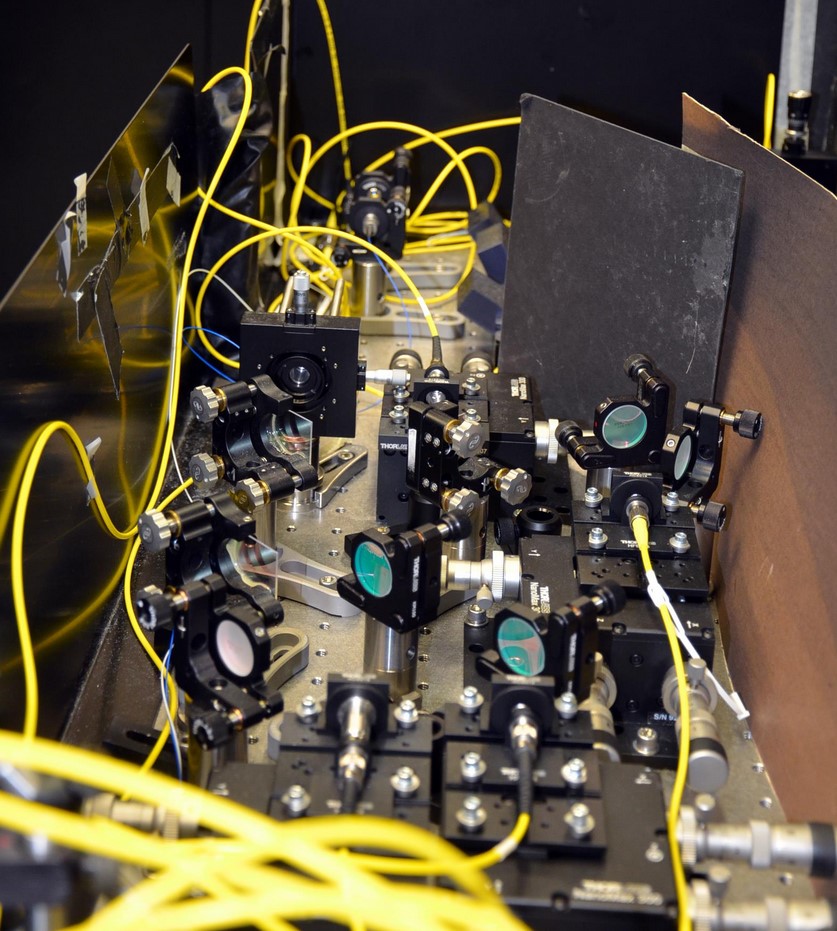
Researchers at University of Illinois have built what they believe is ‘the world’s most efficient single-photon source.’ And they are still improving it. With planned upgrades, the apparatus could generate upwards of 30 photons at unprecedented efficiencies. Sources of that caliber are precisely what’s needed for optical quantum information applications.
Quantum optics researchers often use a nonlinear optical effect called spontaneous parametric down-conversion (SPDC) to produce photon pairs but the probability of producing exactly one pair of single photons is at most 25 percent.
The team resolved this low-efficiency problem in SPDC using a technique called time multiplexing. For each run, the SPDC source is pulsed 40 times in equal intervals, producing 40 “time bins,” each possibly containing a pair of photons (although that would rarely be the case). Each time a photon pair is produced, one photon of the pair triggers an optical switch, which routes the sister photon into temporary storage in an optical delay line—a closed loop created with mirrors. By knowing when the photon entered the loop (when the trigger photon was detected), the researchers know exactly how many cycles to hold the photon before they switch it out. In this way, no matter which of the 40 pulses produced the pair, the stored photon can always be released at the same time. Once all 40 pulses have occurred, any stored photons are released together, as though they came from the same time bin. (University of Illinois)
